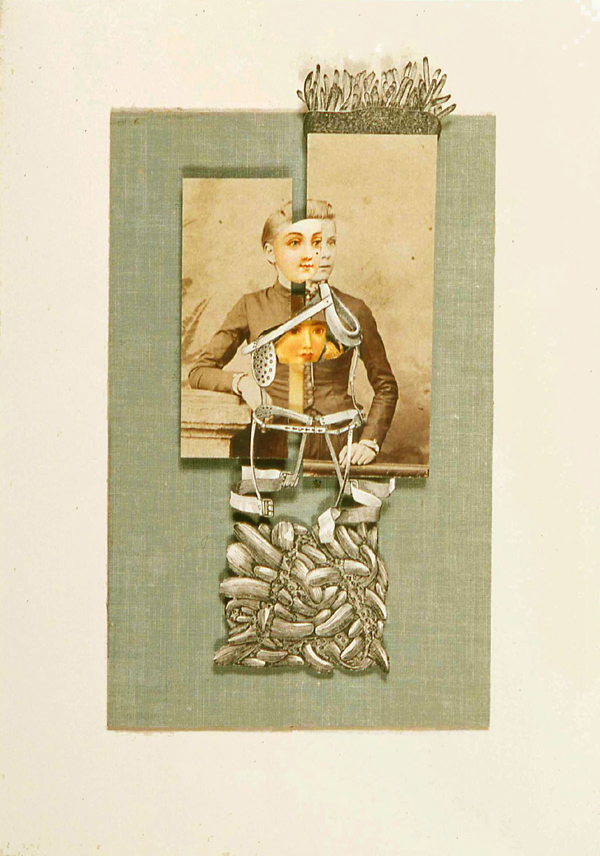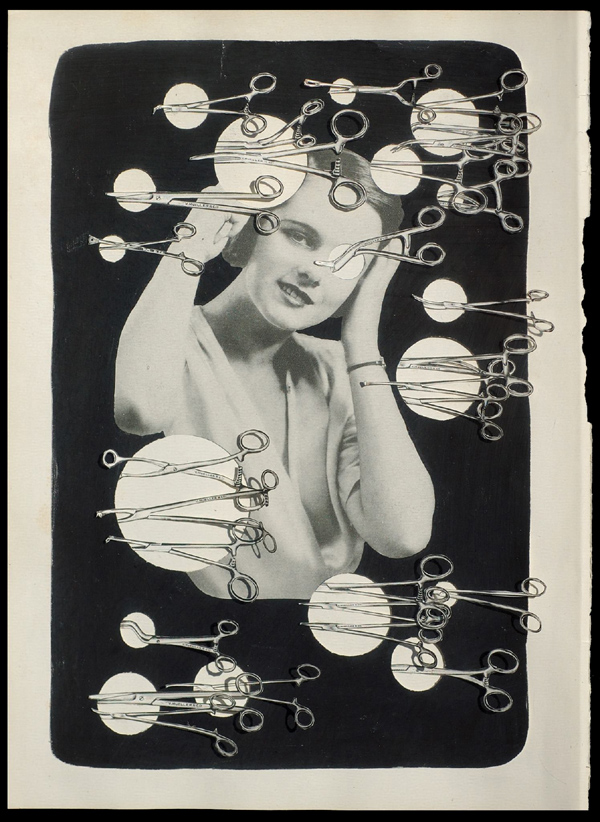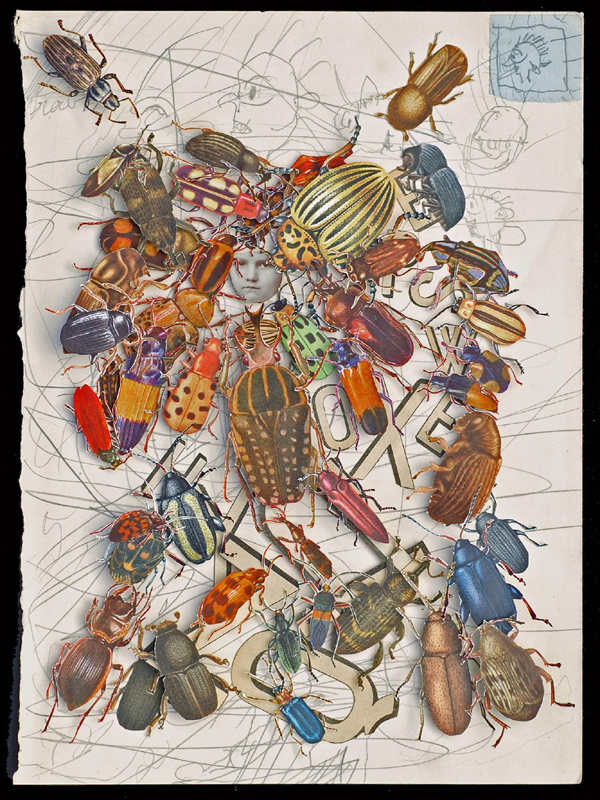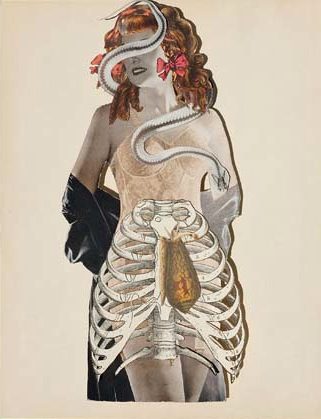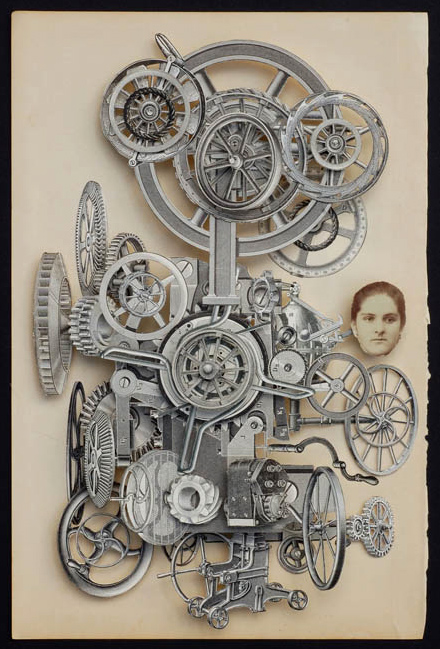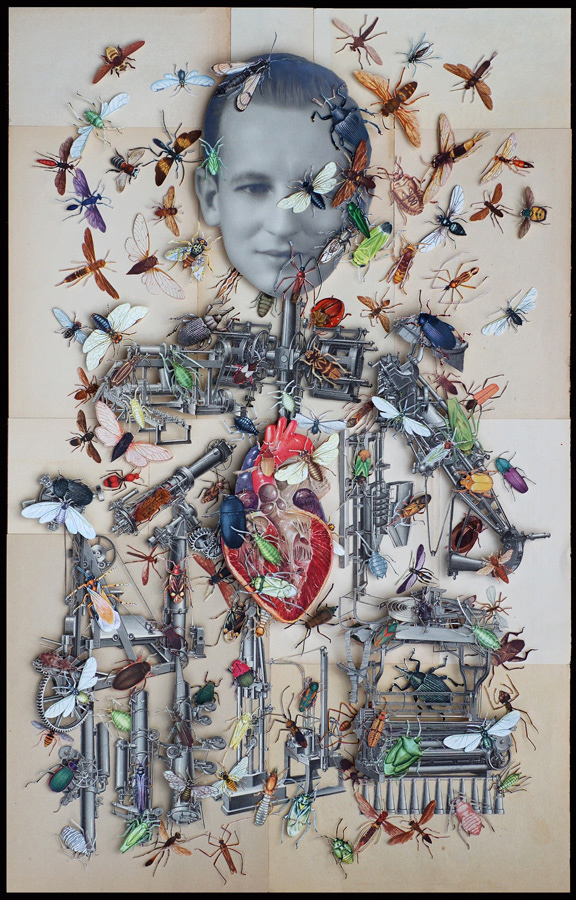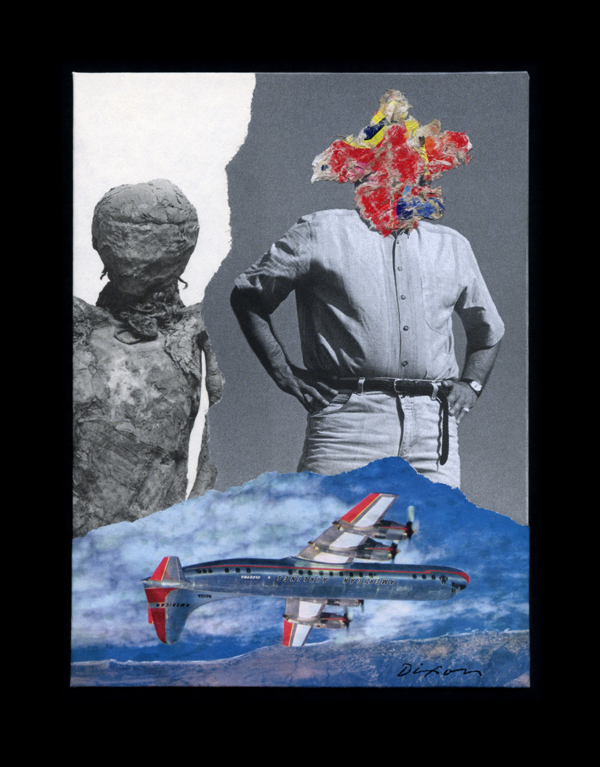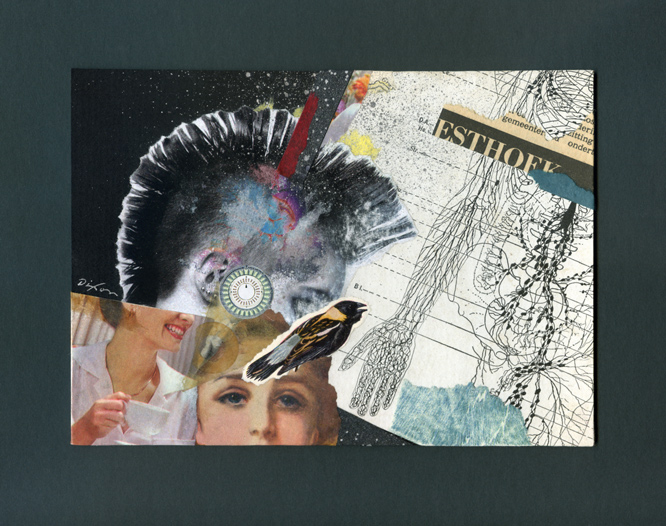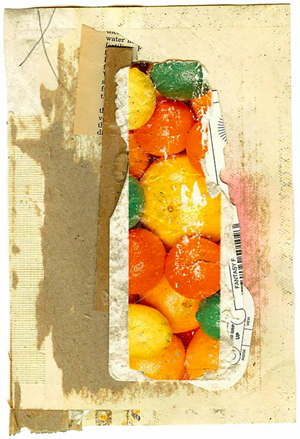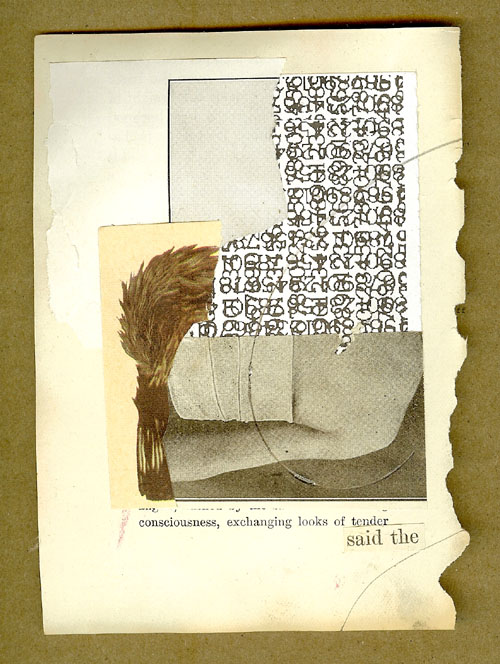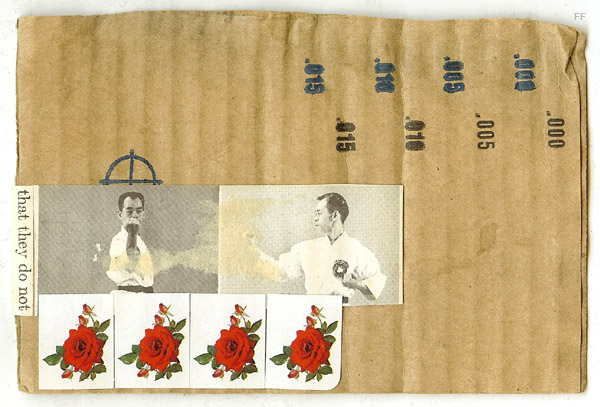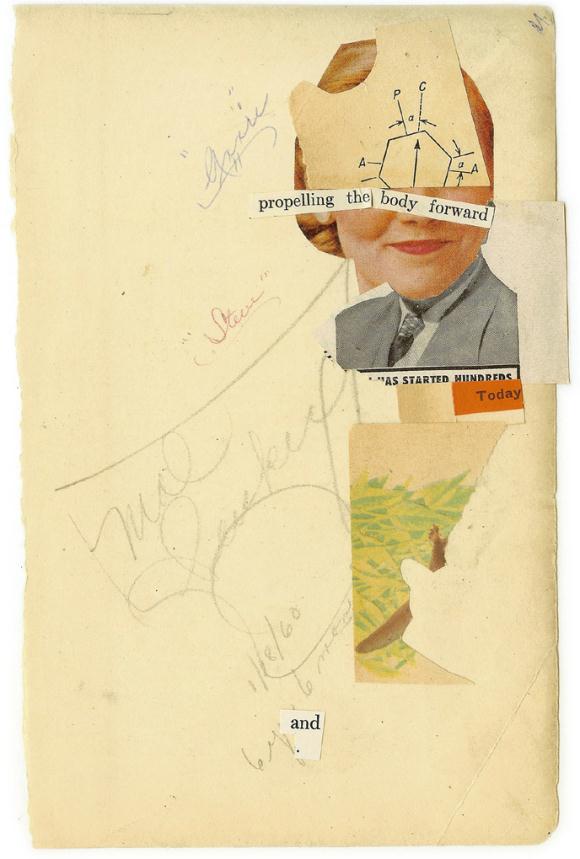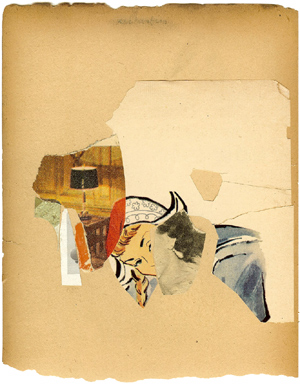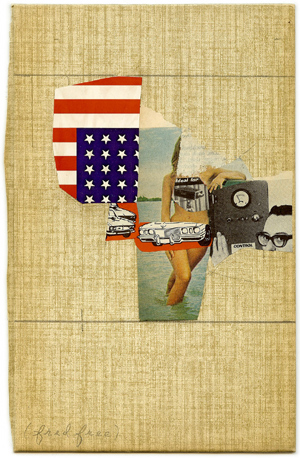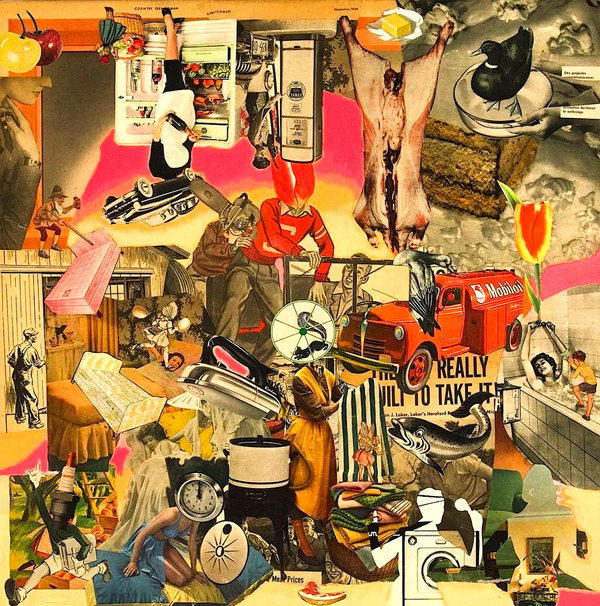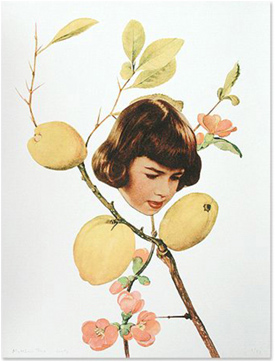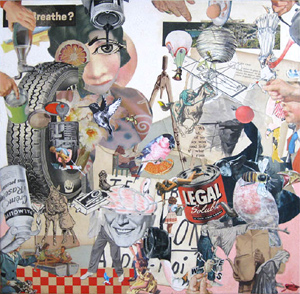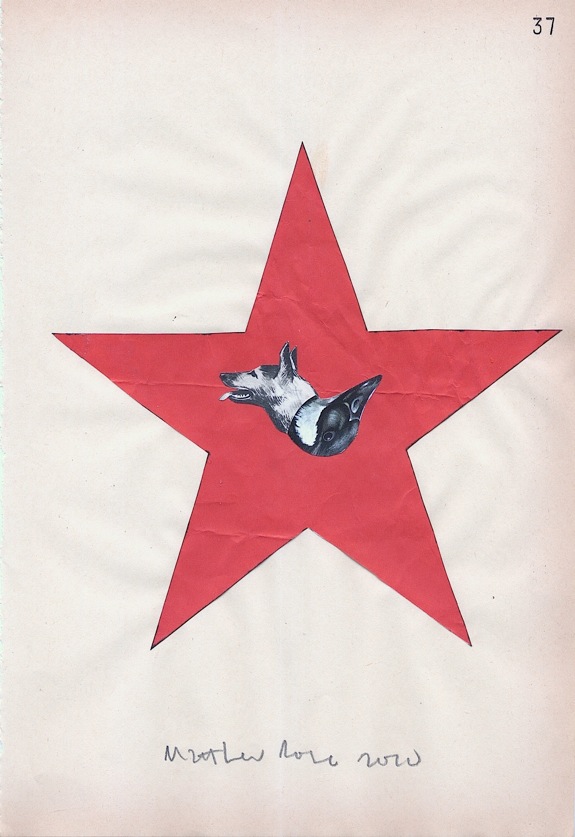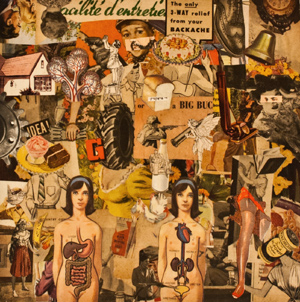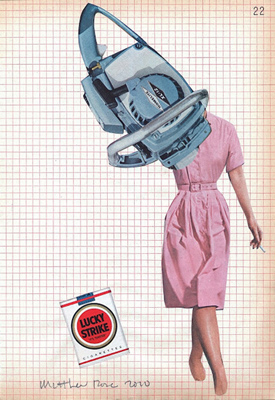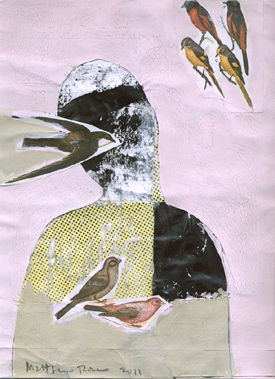“I have devoted myself to the technique of cut-paper collage.”
— Hope Kroll
Mysterious and spooky? Could it be possible that I am examining an art collection in the Addams mansion? No. The essence is far too rarefied for that. Do I instead find myself at a museum of lost Victorian curiosities? No. The effect is much too audacious for that. Perhaps you already have guessed my desirable plight. Yes, dear reader, I am slowly steeping in the sublime virtuosity of a Hope Kroll collage.
Known to many as the “paper surgeon,” the artwork of Hope Kroll would be astonishing enough for her extraordinarily meticulous “scissorship,” but she has clearly decided to put her demanding technique into service for eloquent visual statements that intrigue both the mind and eye. As Cecil Touchon points out, this would be outstanding enough, but she does not stop there. In most of her collage assemblies, she also introduces a signature three-dimensionality to heighten the surreal impression. A maximalist at heart, the prolific artist would certainly agree with Milton Glaser that “Less in not necessarily more.” Somehow she manages, time after time, to achieve unified outcomes from highly complex compositions, while at the same time evoking a powerful atmosphere that first entices, then engrosses, and finally beguiles the observer. I occasionally find her work a bit unsettling, but never unsavory, and always aesthetically exquisite. Like a fine bouillabaisse, her creations delight multiple senses.
Sample a few of her delicious recipes below and “hope,” as I do, that she continues to make many more.
Reconfiguration
Hope Kroll, 2003
Grooming
Hope Kroll, 2006
The Way Children Learn
Hope Kroll, 2010
Science And Faith
Hope Kroll, 2008
Thought Process
Hope Kroll, 2009
Ghost in the Machine
Hope Kroll, 2012
